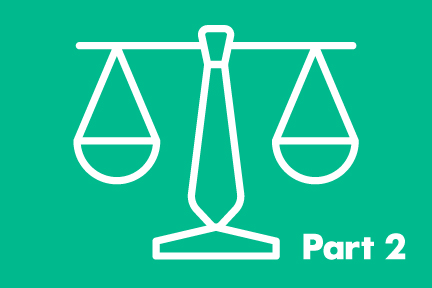Employment Law Series: Maintaining a Compliant Workforce

Hiring
When hiring, employers must make sure job descriptions, advertisements, and interviews are compliant with the Americans with Disabilities Act (ADA) and also meet state requirements. There should not be any prohibited questions asked, and the questions must be directly and appropriately related to the position and the applicant’s ability to perform the job’s essential functions. The questions asked must not discriminate based on race, sex, religion, age, ethnic group, national origin, marital status, military service, disability or any other protected status. Federal anti-discrimination law enforced by the Equal Employment Opportunity Commission (EEOC) include the ADA, the Age Discrimination in Employment Act (ADEA), the Genetic Information Nondiscrimination Act (GINA), and Title VII of the Civil Rights Act of 1964, all of which prohibit discrimination in employment based on protected classes.Additionally, employers can only hire those who can legally work in the United States and must maintain up-to-date I-9 forms for all employees. Form I-9 verifies both the identity of the new employees and their authorization to work in the United States.
Labor & Discrimination
Employers must also ensure that employees are being fairly, adequately, and timely compensated. Certain types of paid leaves are required by law, and other types are voluntarily provided by employers. Regardless of whether employees are unionized workers, the company may still be subject to the National Labor Relations Act, which allows employees to join a union and bargain with their employers, if they wish to do so. The company should display labor law posters, provide every employee with a handbook, and obtain a signed receipt acknowledging that he or she has reviewed the handbook.All company policies and procedures should comply with federal and state labor laws related to employee leave, equal employment opportunity, discrimination, sexual harassment, and other requirements. Discrimination is illegal in the employment context when an employer makes an employment decision impacting the terms or conditions of employment – hiring, promotion, demotion, firing – on the basis of that employee’s membership in a protected class, as described above.
Safety
To maintain a complaint workforce, the company must provide a safe and healthy workplace. Nearly all employers are required by the Occupational Safety and Health Administration (OSHA) to establish action plans for preventing and responding to emergencies in the workplace. No person should ever have to be injured, become ill, or die for a paycheck. Under OSHA law, employers have a responsibility to provide a safe workplace; some key employer responsibilities include, but are not limited to:- Provide a workplace free from serious recognized hazards and comply with standards, rules and regulations issued under the OSHA Act;
- Examine workplace conditions to make sure they conform to applicable OSHA standards;
- Establish or update operating procedures and communicate them so that employees follow safety and health requirements;
- Provide safety training in a language and vocabulary workers can understand;
- Provide medical examinations and training when required by OSHA standards;
- Post, at a prominent location within the workplace, the OSHA poster (or the state-plan equivalent) informing employees of their rights and responsibilities;
- Report to the nearest OSHA office all work-related fatalities within 8 hours, and all work-related inpatient hospitalizations, all amputations and all losses of an eye within 24 hours;
- Keep records of work-related injuries and illnesses. (Note: Employers with 10 or fewer employees and employers in certain low-hazard industries are exempt from this requirement.); and
- Do not discriminate against employees who exercise their rights under the Act. See OSHA’s “Whistleblower Protection” webpage at www.whistleblowers.gov.
To ensure that you are maintaining a compliant workforce within your company, find an experienced attorney to help you review and evaluate your procedures by quickly posting a short summary of your legal needs on Legal Services Link and letting the perfect attorney come to you!
Related Employment Law Resources:
Do You Need An Attorney?
If so, post a short summary of your legal needs to our site and let attorneys submit applications to fulfill those needs. No time wasted, no hassle, no confusion, no cost.

